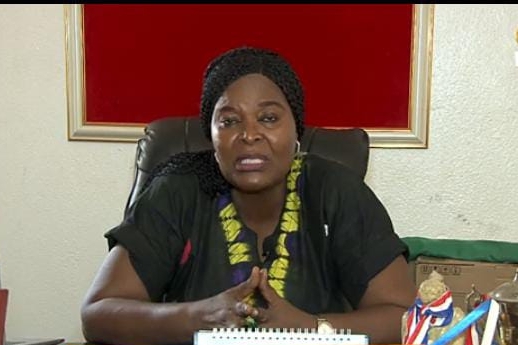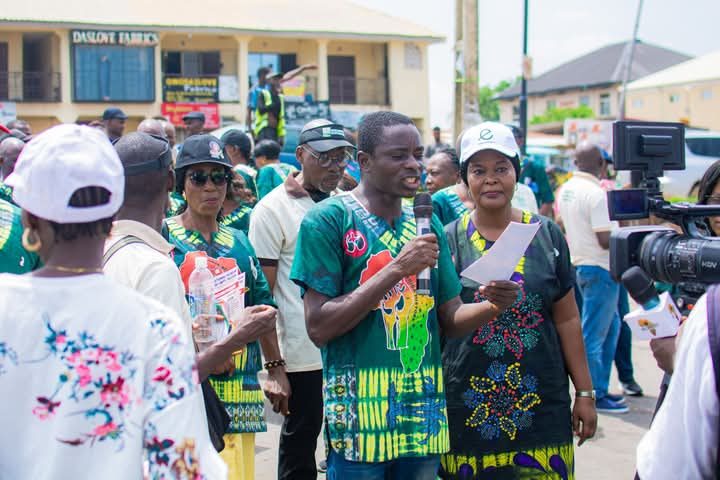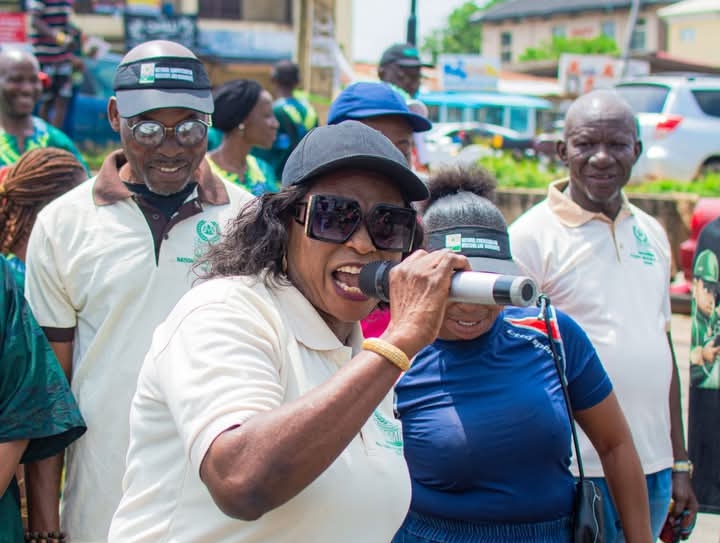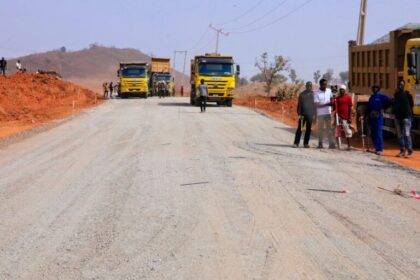
By Remilekun Oyelowo | Ibadan, Nigeria
On Thursday, April 4th, 2025, the streets of Ibadan came alive in an unexpected way. It wasn’t a parade for a political figure or a pop concert; instead, it was a vibrant, culture-filled rally organized by the National Museum of Unity — a museum that has long struggled with funding and visibility but is determined to keep Nigeria’s rich heritage alive.
As the rally began, the familiar hum of Dugbe Market, one of Ibadan’s busiest commercial areas, shifted to the thrum of talking drums. The streets erupted into color, as performers in traditional garb danced energetically through the crowd, while museum staff and students, holding placards with historical messages, mingled with market-goers. It was a celebration of Nigeria’s cultural heritage, but it also carried a clear message: museums like the National Museum of Unity need the support of the public to survive.

The rally was not only about promoting the museum, but also about raising awareness for the challenges the institution faces, including limited funding and public engagement. It reached key locations throughout Ibadan, including Dugbe, Ring Road, Mobil Bus Stop, and Aleshinloye Market. The rally’s objective was to engage the public, educate them on the museum’s historical value, and, perhaps most importantly, remind Nigerians of the importance of their cultural identity.
“We have to bring culture to the people,” said Mrs. Oriyomi Pamela Otuka, the museum curator. “Museums are memory banks, but if they collapse, we lose our identity. We need more investment from the government to ensure that our heritage is preserved for future generations.”

The National Museum of Unity in Ibadan, established in 1976 as Nigeria’s first national museum, houses a treasure trove of artifacts that speak to the country’s diverse and rich cultural history. From the Nok terracotta sculptures to Benin bronzes, these relics are not just museum pieces — they represent the stories of Nigeria’s people. Yet, despite the museum’s importance, it remains underfunded, a situation exacerbated by Nigeria’s economic struggles.
But despite these challenges, the museum’s staff and cultural advocates are determined not to let the institution fade into obscurity. As the rally rolled through the bustling streets, it was clear that this was more than just an event. It was an appeal for action. The museum’s staff were hoping to spark a cultural revival, one that would include better funding, more local engagement, and greater recognition of the museum’s value to the broader community.

“Funding is a big challenge for us,” Mrs. Otuka explained in a heartfelt moment during the rally. “But it’s not just about the money. It’s about the public’s engagement with history. If people don’t know why the museum matters, they won’t care if it’s underfunded.”
The rally was marked by lively interactions between the museum staff and Ibadan’s residents. Ambassadors Kehinde Oladele Oguntoye and Taiwo Oladele Oguntoye, cultural figures known as the Ejire Twins, also played a key role in spreading the rally’s message. The two brothers, known for their advocacy work in cultural preservation, shared their belief in the power of museums to connect Nigerians to their roots.

“The primary goal of this rally,” said Ambassador Kehinde Oguntoye, “is to educate the public about the value of culture and heritage. We want people to understand that the museum isn’t just a place for tourists, it’s a place for everyone.”
His twin brother, Taiwo Oguntoye, also spoke passionately about the importance of the National Museum of Unity in the context of Ibadan’s tourism and history. “A visit to Ibadan is incomplete without a trip to the National Museum of Unity,” he said. “It showcases the past and present, and helps us project into the future. When you visit, you’re not just looking at artifacts — you’re understanding who we are as a people.”
These words resonated with many of the people who had gathered to witness the rally, including Mrs. Alágbe Christiana, the museum’s Conservator. For her, the rally was a vital step in ensuring that the museum remains a key destination for both cultural and economic tourism. “We are using tourism as a tool to showcase what the museum offers,” Mrs. Christiana said. “It’s important that we continue to engage with the public, draw attention to the museum, and ensure that it is recognized as a cultural hub for the state and country.”
For many Ibadan residents, the rally was an eye-opening experience. Among the crowd was Simi, a 12-year-old student, who found herself intrigued by the artifacts on display. “Why don’t we learn about these things in school?” she asked her teacher, pointing at the Nok sculptures. The teacher, taken aback by the question, had no immediate answer, but the conversation lingered. It highlighted the gap between what is taught in classrooms and the wealth of local history that often goes unnoticed.
It was this spark of curiosity that museum staff and volunteers were hoping to ignite in as many people as possible. As the rally moved through the streets, Simi’s question was echoed by many other attendees. The experience was especially meaningful for students who participated in the event. Bola, a secondary school student, explained her excitement: “I never knew that the museum had so much history about Nigeria. I’ll definitely be coming back with my friends.”
But the rally wasn’t just about showcasing artifacts; it was also about positioning the museum as a vital cultural and educational space for the community. The Alternative Nigerian Heritage FEF Project, a collaboration between the National Museum of Unity and IFRA-Nigeria, seeks to transform the museum into a more vibrant, inclusive space, where history is not only preserved but celebrated.
The rally’s success was evident in the energy that filled the streets of Ibadan that day. People stopped to learn, to ask questions, to listen. Some even took photos, using their smartphones to capture the moment. The museum had come alive, and with it, Nigeria’s cultural history was once again a living, breathing part of daily life.
In the end, Mrs. Otuka and her team achieved more than just spreading the museum’s message — they created a lasting impression. “This is just the beginning,” Mrs. Otuka said. “We hope that the rally will lead to more people visiting the museum, and more importantly, we want to inspire a broader cultural movement that recognizes the importance of preserving our heritage.”
The National Museum of Unity has long served as a repository of Nigeria’s history, but with initiatives like this rally, it is becoming more than just a place to view artifacts. It is becoming a space for conversation, discovery, and a renewed connection to the past. The rally may have been just one day, but the hope is that its impact will be felt for years to come.
As the day came to a close and the crowds began to disperse, the mission of the rally had been fulfilled: culture, once again, had made its way into the heart of Ibadan. And with it, a new generation of Nigerians had discovered a deeper connection to their roots.



